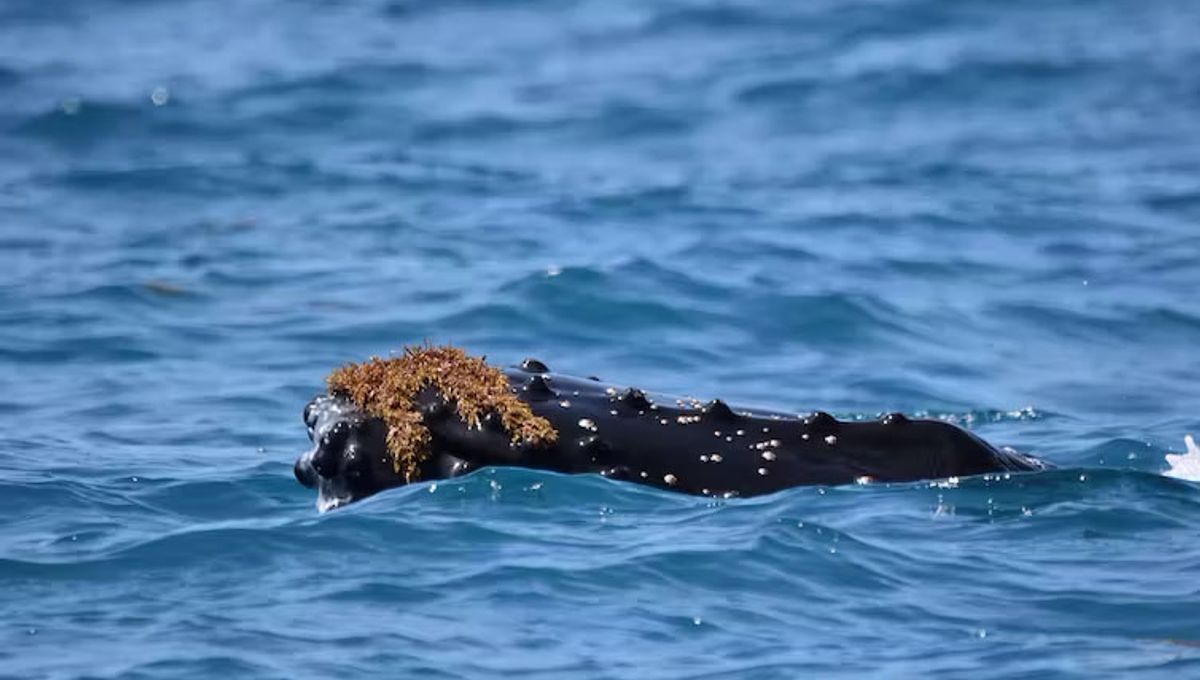
Marine mammals are known for their high levels of intelligence, their social skills, and their association with Netflix documentaries. However, most people probably wouldn’t list skincare as one of a whale’s most famous activities – and that’s where they’d be wrong. While orcas and humpback whales have been filmed enjoying a spa day, now they’ve got a new skincare method involving kelp.
Baleen whales including humpback whales (Megaptera novaeangliae) have been observed “kelping” and swimming around with seaweed on their heads. Off the east coast of Australia, three direct observations of humpback whales rolling around and actively seeking kelp beds or seaweed have been recorded. This behavior has also been seen in grey whales (Eschrichtius robustus), which are known to feed on both seaweed and seagrasses.
By analyzing 100 social media posts regarding whale and seaweed interaction recorded by citizen scientists, whale-watching tours, and members of the public, the team found that the most frequently observed areas for the whales to have seaweed on themselves were between their front flipper and the front of their face, called the rostrum. This represented 56 percent of the social media interactions. Uncrewed aerial vehicles (UAVs) were also used to observe whale and seaweed interactions, they filmed whales rolling with seaweed wrapped around different fins or on their rostrums.
So what are the whales up to? The researchers suggest that they are using the kelp as a kind of exfoliant helping to remove parasites such as the whale louse, dead skin, and bacteria from their bodies, there may also be an element of simply playing with the seaweed for sheer enjoyment.
“There are two plausible theories: play and/or self-medication with seaweed. This behaviour may be playful but could also serve additional benefits in the context of learning and socialising, as well as ectoparasite removal and skin treatment by using brown algae’s antibacterial properties.” said Dr Olaf Meynecke, the paper’s lead author, in a statement.
With the increased use of UAVs in this context, the team expects to see more observations of this behavior. However, they also suggest that the consequences of kelp dieback could present some issues, and conservation efforts may need to include this in future plans.
The paper is published in the Journal Of Marine Science And Engineering.
Source Link: Why Are Whales Making A Fashion Out Of Seaweed Hats?